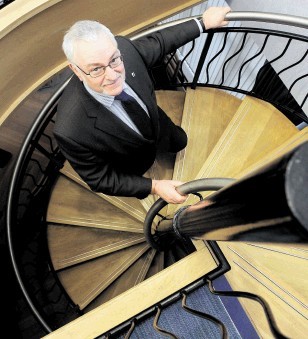
The principal of the University of the Highlands and Islands (UHI) said yesterday the institution would expand its renewable-energy courses to help meet the sector’s skills shortages.
James Fraser, who is also vice-chancellor of UHI, said the university wanted to attract students from across Scotland and the world to its 13 colleges.
Mr Fraser said Scotland’s newest university already had courses related to the renewables sector in place, but hoped to add to them and make them available in other locations.
He said: “There are new industries around our shores in places like Lewis, Thurso and the Moray Firth. The marine-renewables sector appears to be at the point of taking off, and Global Energy Group has reopened Nigg yard.”
There are hopes more than 2,000 jobs will be created at Nigg, which will be a home for all types of renewables and oil-sector businesses.
Mr Fraser added: “We will have to provide the skills, knowledge and competence for these industries and ensure that people living in the Highlands and Islands will get a crack at some of those jobs.
“We already have courses in place that address the need for people with skills relevant to the renewables industry, like a BSc in renewable engineering which we provide in Stornoway. That is a course we would like to expand and make available in places like Thurso and Inverness.”
UHI was awarded a teaching grant of £25.1million for 2012-13 by the Scottish Funding Council, which will allow it to provide an extra 1,000 student places.
Mr Fraser said he hoped the student population at UHI, which stands at 7,500, would rise by up to 3,000 in the next three years.
The principal added he also wanted UHI to provide courses which would link the oil and gas sector to the renewables industry.
He said: “The oil and gas industry has plenty of life left in it, and one of the things we are working on is looking at where we can apply training in oil and gas solutions to marine renewable solutions.
“I am told that the marine-renewable industry is now coming up against the same problems the oil and gas industry came up against 20-30 years ago.
“The solutions can be transferred, and there are opportunities for us to engage with business and find out how we can support that move.”
Recommended for you
